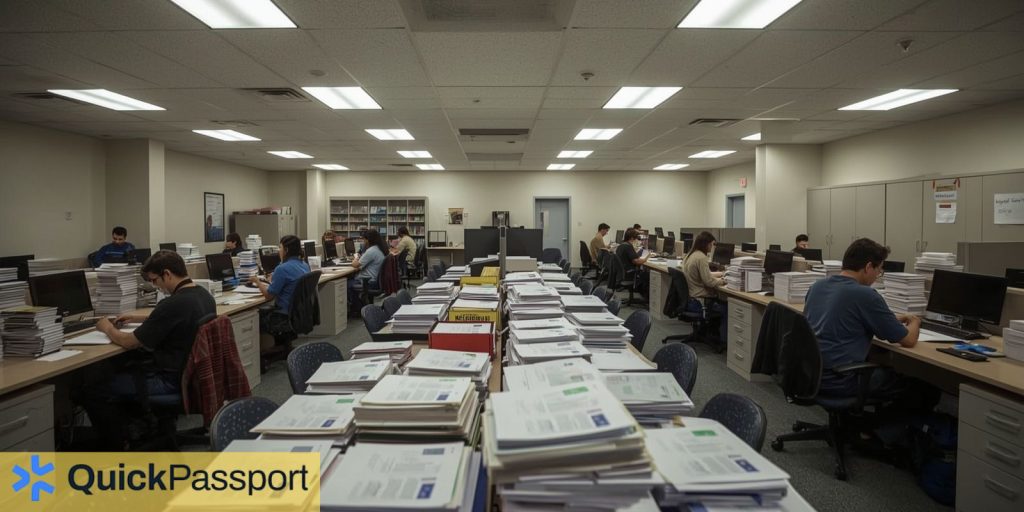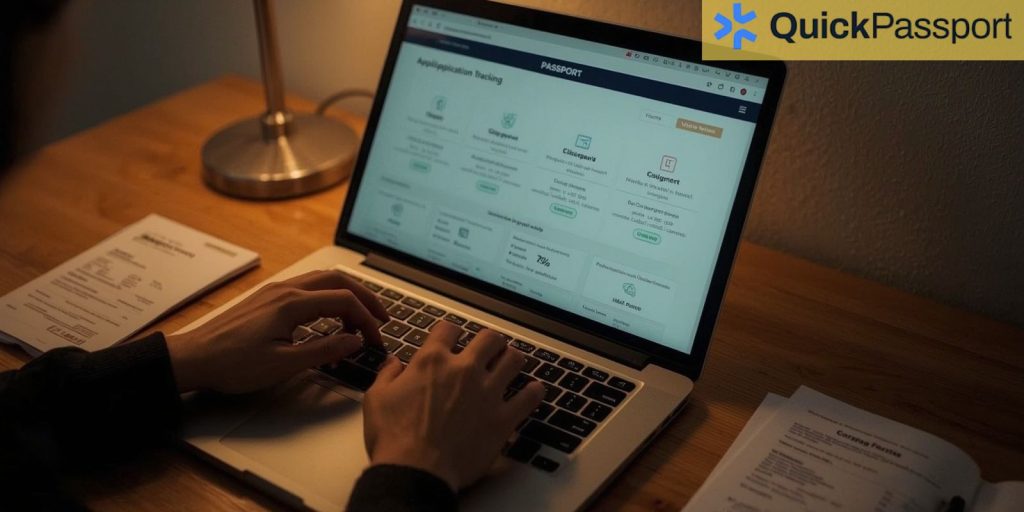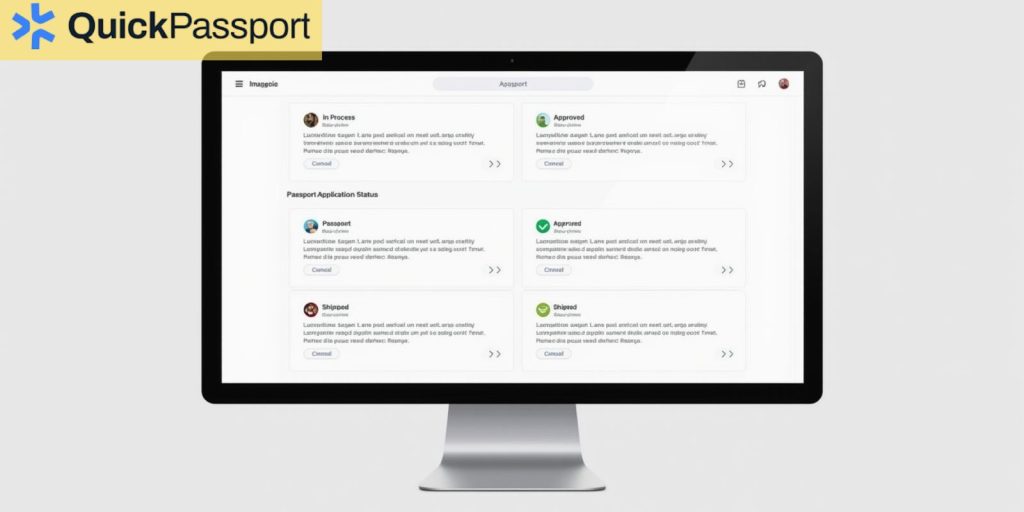Waiting for your passport application to process can be one of the most anxiety-inducing aspects of international travel planning. Whether you’re preparing for a long-awaited vacation, an important business trip, or dealing with an unexpected travel emergency, understanding how to track your passport application status online has become essential for modern travelers. The uncertainty of not knowing where your application stands in the processing pipeline can turn what should be an exciting travel preparation period into a stressful waiting game.
Passport processing delays have become increasingly common in recent years, affecting millions of travelers worldwide. These delays can stem from various factors, including increased application volumes, staffing shortages at processing centers, incomplete documentation, and seasonal fluctuations in demand. During peak travel seasons, such as summer months and holiday periods, processing times can extend significantly beyond the standard timeframes, leaving travelers scrambling to understand when they might receive their crucial travel documents.
The good news is that modern passport agencies have developed sophisticated online tracking systems that provide real-time updates on your application status. These digital tools have revolutionized the way travelers can monitor their passport applications, offering transparency and peace of mind during what was once a completely opaque process. By understanding how to effectively use these tracking systems, you can stay informed about your application’s progress and make informed decisions about your travel plans.
Learning to navigate passport status checking systems isn’t just about satisfying curiosity – it’s about taking control of your travel timeline. When you know exactly where your application stands, you can better plan your departure dates, book flights with confidence, and determine whether expedited processing services might be necessary. This knowledge becomes particularly valuable when dealing with time-sensitive travel situations or when coordinating complex itineraries that depend on having your passport in hand by specific dates.
The process of checking your passport status online has been streamlined significantly, but knowing the right steps, understanding what different status messages mean, and recognizing when action might be required on your part can make the difference between a smooth experience and unnecessary complications. Additionally, understanding common delay patterns and their typical resolution timeframes can help set realistic expectations and reduce travel-related stress.
Key Takeaways
- Multiple tracking methods available: Most passport agencies offer online tracking through official websites, mobile applications, and automated phone systems, providing 24/7 access to your application status updates.
- Essential information required: To check your status, you’ll typically need your application locator number, last name as it appears on the application, and date of birth – keep this information easily accessible throughout the process.
- Status updates occur in stages: Applications progress through distinct phases including received, in process, approved, and shipped, with each stage providing specific information about your application’s current position in the workflow.
- Processing times vary significantly: Standard processing can range from 6-11 weeks, while expedited services typically take 3-5 weeks, though these timeframes can extend during peak seasons or due to complications.
- Early intervention is crucial: Monitoring your status regularly allows you to quickly identify and resolve issues such as missing documentation or payment problems before they cause significant delays.
- Expedited options remain available: Even after submitting a standard application, you may be able to upgrade to expedited processing if your travel timeline becomes more urgent.
- Regional processing centers affect timing: Different facilities handle applications at varying speeds, and understanding which center is processing your application can provide insight into expected timeframes.
- Documentation issues cause most delays: Incomplete applications, unclear photos, or missing supporting documents account for the majority of processing delays, making careful initial submission critical.
Understanding Passport Processing Delays and Their Causes
Passport processing delays have become a significant concern for travelers, with various factors contributing to extended waiting periods beyond the standard processing times. Understanding these underlying causes can help you better anticipate potential delays and plan accordingly for your travel needs. The most common reason for delays involves incomplete or incorrect documentation submitted with the initial application. When passport agencies receive applications with unclear photographs, missing signatures, incorrect forms, or insufficient supporting documentation, the entire process must be paused while they request additional information from the applicant.

Seasonal fluctuations play a major role in processing delays, with spring and early summer months typically experiencing the highest application volumes. During these peak periods, processing centers can become overwhelmed with applications from travelers preparing for summer vacations, study abroad programs, and family trips. This increased volume can extend processing times significantly beyond the standard 6-11 week timeframe for routine service. Additionally, staffing challenges at processing facilities can compound these delays, particularly when experienced personnel are unavailable due to illness, training requirements, or other operational factors.
Security checks and verification processes also contribute to processing delays, especially for first-time passport applicants or those with complex travel histories. These additional security measures, while necessary for national security, can add several weeks to the standard processing timeline. Furthermore, technical issues with processing systems, mail delivery delays, and coordination between different government agencies can create unexpected bottlenecks in the application pipeline.
For Denver residents seeking expedited passport processing services, understanding these delay factors becomes even more critical when making decisions about application timing and service levels. Regional processing centers may experience different delay patterns based on their geographic coverage area and local application volumes, making it important to stay informed about current processing conditions.
Step-by-Step Guide to Checking Your Passport Status Online
Checking your passport application status online is a straightforward process once you understand the required steps and have the necessary information readily available. The first step involves gathering your essential tracking information, which includes your application locator number (also called a tracking number), your last name exactly as it appears on your application, and your date of birth. The application locator number is typically provided on your receipt when you submit your application at a passport acceptance facility or post office, so keeping this receipt in a safe, accessible location is crucial for future reference.
To begin the tracking process, navigate to the official passport agency website for your country. In the United States, this would be the State Department’s official passport website, which features a dedicated “Check Status” or “Track Your Application” section prominently displayed on the homepage. Once you’ve located the tracking portal, you’ll be prompted to enter your application locator number, which is usually a 10-13 digit combination of numbers and letters. Be careful to enter this information exactly as it appears on your receipt, as even small errors can prevent the system from locating your application.
After entering your locator number, you’ll need to provide your last name exactly as it appears on your passport application. This field is case-sensitive in many systems, so pay attention to capitalization and spacing. The final required field is typically your date of birth, which should be entered in the format specified by the tracking system (usually MM/DD/YYYY or DD/MM/YYYY depending on your location). Some systems may also request additional verification information, such as the ZIP code where you submitted your application or the last four digits of your Social Security number.
Once you’ve successfully entered all required information, the system will display your current application status along with relevant details about your application’s progress. This information typically includes the date your application was received, the current processing stage, and an estimated completion timeframe. Many systems also provide additional details such as which processing facility is handling your application and whether any additional documentation or action is required on your part. Make note of any specific instructions or requirements displayed with your status information, as addressing these promptly can prevent further delays in processing.
For travelers who need to understand more about current processing timeframes and expedite options, the status tracking system often provides links to additional resources and contact information for specific situations that may require personal assistance from passport agency representatives.
Interpreting Different Status Messages and What They Mean
Understanding the various status messages displayed in passport tracking systems is essential for accurately gauging your application’s progress and knowing when specific actions might be required. The most common initial status message is “Application Received” or “In Process,” which indicates that your application has been successfully delivered to the processing facility and has entered the official review queue. This status typically appears within 1-2 weeks of submitting your application and confirms that your paperwork has been logged into the system and assigned a processing number.

The “In Process” status is often the longest phase of passport processing, during which your application undergoes various review stages including document verification, photo analysis, and background checks. During this phase, you may see sub-statuses such as “Under Review,” “Processing,” or “Quality Control,” each indicating different stages of the comprehensive evaluation process. It’s important to understand that applications can remain in this status for several weeks, and the lack of status changes during this period doesn’t necessarily indicate problems or delays.
When your application progresses to “Approved” status, it means that all review processes have been completed successfully and your passport is being prepared for printing and binding. This stage typically takes 3-5 business days, after which the status will update to “Shipped” or “Mailed.” The shipped status usually includes tracking information for the delivery service being used to send your passport, allowing you to monitor the final delivery phase of the process.
Certain status messages require immediate attention from applicants. Messages such as “Additional Documentation Required,” “On Hold,” or “Returned for Correction” indicate that your application cannot proceed without specific action on your part. These statuses are typically accompanied by detailed instructions explaining what documentation or corrections are needed and how to submit the required information. Responding quickly to these requests is crucial for minimizing delays and keeping your application moving through the processing pipeline.
Some systems also display status messages related to payment issues, such as “Payment Processing” or “Payment Required,” which may indicate problems with check payments or credit card transactions. Address these payment-related issues promptly by contacting the passport agency or resubmitting payment through the specified channels. Understanding these various status messages helps you stay informed about your application’s progress and take appropriate action when necessary to ensure timely processing.
Alternative Methods for Tracking Your Passport Application
While online tracking systems provide the most convenient method for monitoring passport application progress, several alternative tracking methods are available for situations where internet access is limited or when you need to speak directly with a representative. Phone-based tracking systems offer 24/7 automated status updates through toll-free numbers provided by passport agencies. These systems typically require the same information as online tracking – your application locator number, last name, and date of birth – but provide voice-guided status updates that can be particularly helpful for individuals who prefer audio information or have visual impairments.
Many passport agencies have also developed mobile applications that mirror the functionality of their websites while providing additional features such as push notifications for status updates and quick access to frequently needed information. These mobile apps often include helpful features like document checklists, processing time estimates, and direct links to customer service resources. The apps can be particularly valuable for travelers who are frequently on the move and need quick access to their application status without navigating through full websites.
For situations requiring personal assistance or complex inquiries, direct contact with passport agency customer service representatives remains an important option. While wait times for phone support can be lengthy during peak periods, speaking with a trained representative can provide detailed explanations of status messages, clarification about required documentation, and guidance for resolving application issues. Customer service representatives can also provide information about expedited processing options and help determine whether your situation qualifies for emergency passport services.
Email-based inquiry systems offer another alternative for non-urgent questions about application status or processing procedures. While response times for email inquiries can range from 24-72 hours, this method allows you to document your communications and provide detailed explanations of complex situations. Many agencies also maintain comprehensive FAQ sections and knowledge bases on their websites that can answer common questions about processing delays, status messages, and required documentation without the need for direct contact.
For travelers in the Denver area who need immediate assistance or face urgent travel situations, visiting local passport acceptance facilities or agency offices can provide face-to-face support for resolving application issues. QuickPassport – Denver specializes in helping travelers navigate complex passport situations and can provide expert guidance on tracking applications, understanding status messages, and exploring expedited processing options when time-sensitive travel needs arise.
What to Do When Your Application Shows Unexpected Delays
When your passport application experiences unexpected delays beyond the standard processing timeframes, taking prompt and appropriate action can help resolve issues and minimize the impact on your travel plans. The first step involves carefully reviewing your most recent status update to determine whether the delay requires specific action on your part. If your status indicates missing documentation, payment issues, or the need for corrections, address these requirements immediately by following the detailed instructions provided with your status update.

For delays that appear to be processing-related rather than documentation issues, document the timeline of your application carefully, including submission date, expected processing timeframe, and current status. This information will be essential if you need to contact customer service or explore expedited processing options. Keep records of all communications with passport agencies, including reference numbers from phone calls, email confirmations, and any written correspondence related to your application.
If your travel date is approaching and standard processing appears unlikely to meet your timeline, investigate expedited processing options that may still be available. Many passport agencies allow applicants to upgrade to expedited service even after submitting standard applications, though this typically requires additional fees and may involve specific procedures for requesting the upgrade. In some cases, you may need to provide proof of imminent travel, such as flight reservations or travel itineraries, to qualify for expedited processing.
For truly urgent situations where even expedited processing may not provide sufficient time, emergency passport services may be available through regional passport agencies or emergency appointment systems. These services are typically reserved for life-or-death emergencies, urgent business travel, or other qualifying circumstances, and require appointments that may need to be scheduled well in advance. Understanding the criteria and procedures for emergency services can be crucial when facing unexpected delays close to your travel date.
Consider consulting with passport processing specialists who can provide expert guidance on navigating delays and exploring all available options for meeting your travel timeline. Professional services like QuickPassport – Denver have extensive experience helping travelers resolve complex passport situations and can often identify solutions that may not be immediately apparent to individual applicants. Their expertise in dealing with processing delays and understanding agency procedures can be invaluable when time is critical and standard processing options appear insufficient for your travel needs.
Frequently Asked Questions About Passport Processing Delays
How often should I check my passport application status online?
Checking your passport status once or twice per week is generally sufficient for monitoring normal processing progress. More frequent checking won’t speed up the process and status updates typically occur in batches rather than continuously throughout each day.
What should I do if the tracking system says my application wasn’t found?
If the system cannot locate your application, verify that you’re entering your locator number and personal information exactly as they appear on your receipt. Wait at least one week after submitting your application before attempting to track it, as it may take several days for applications to be logged into the system.
Can I upgrade to expedited processing after submitting a standard application?
Yes, many passport agencies allow upgrades to expedited processing for additional fees, provided your application hasn’t completed processing. Contact customer service as soon as possible to inquire about upgrade options and required procedures for your specific situation.
Why might my application status remain unchanged for several weeks?
Applications often remain in “In Process” status for extended periods while undergoing various review stages including document verification, background checks, and quality control measures. This extended processing phase is normal and doesn’t necessarily indicate problems with your application.
What happens if I need to travel before my passport arrives?
If you have confirmed travel plans and your passport hasn’t arrived within a reasonable timeframe, contact the passport agency immediately to explore emergency processing options. You may need to provide proof of travel and pay additional fees for emergency services.
How can I resolve issues with missing or incorrect documentation?
When your status indicates documentation problems, follow the specific instructions provided with your status update. Submit required documents promptly through the specified channels and keep copies of all correspondence for your records.
Are there specific times of year when processing delays are more common?
Processing delays are most common during spring and early summer months when application volumes peak due to vacation travel planning. Holiday periods and back-to-school seasons can also experience increased processing times due to higher demand.
What information do I need to track my passport application status?
You’ll need your application locator number from your receipt, your last name exactly as it appears on the application, and your date of birth. Some systems may also require additional verification information such as your ZIP code or partial Social Security number.
Conclusion
Successfully navigating passport processing delays and effectively monitoring your application status online requires understanding the available tools, knowing how to interpret status messages, and taking appropriate action when issues arise. The modern passport tracking systems provide unprecedented transparency into the application process, allowing travelers to stay informed about their application’s progress and make informed decisions about their travel planning. By regularly monitoring your status and understanding what different messages mean, you can identify potential issues early and take corrective action before they significantly impact your travel timeline.
The key to managing passport processing delays lies in preparation, patience, and proactive communication with passport agencies when necessary. While delays can be frustrating, especially when travel dates are approaching, understanding the common causes of delays and available resolution options can help reduce stress and improve outcomes. Whether you’re dealing with documentation issues, seasonal processing delays, or urgent travel situations, the combination of online tracking tools and professional assistance can help ensure that your passport needs are met as efficiently as possible.
For Denver-area travelers facing complex passport situations or time-sensitive travel needs, QuickPassport – Denver provides expert guidance and support throughout the application and tracking process. Their specialized knowledge of passport procedures, delay resolution strategies, and expedited processing options can be invaluable when standard processing timeframes don’t align with your travel requirements. By combining the convenience of online status tracking with professional expertise when needed, you can navigate the passport process with confidence and ensure that your travel documents are ready when you need them most.






